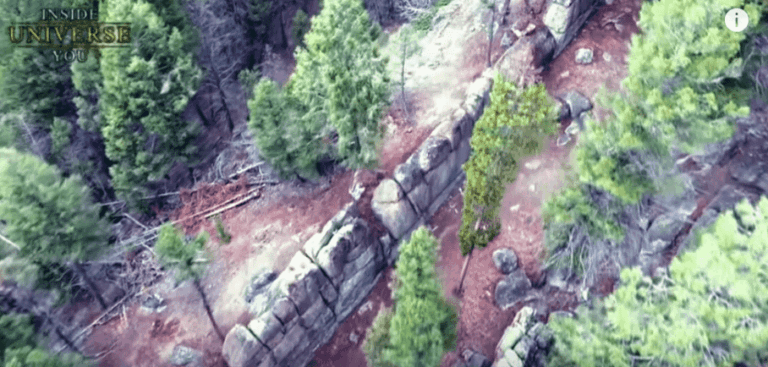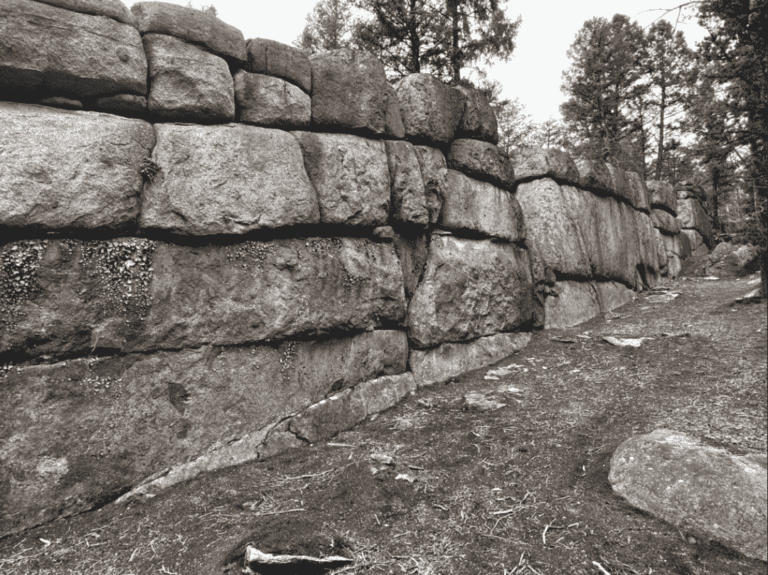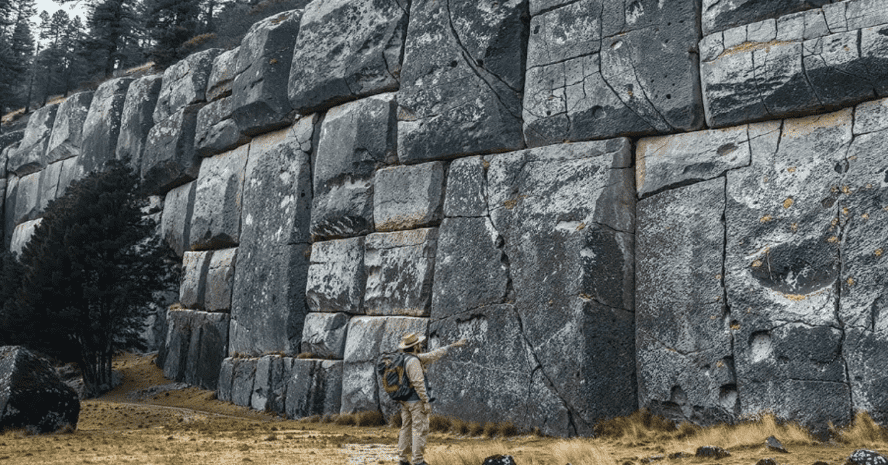If you hike deep enough into the mountains of Montana, you might stumble across something that makes you stop in your tracks, tilt your head, and mutter, “Wait… what am I looking at here?”
That’s exactly what happened in 1996 to landowners Linda Welsh and Christopher Borton while hiking their property near Whitehall, Montana. What they found has been sparking debates, inspiring wild theories, and giving history buffs a serious case of goosebumps ever since: The Sage Wall — a massive stone formation that some believe could be an ancient megastructure, built by a prehistoric North American civilization with advanced engineering and even astronomical knowledge.
Others? They think it’s just Mother Nature showing off.
Either way, this is one of those golden nuggets of history (or maybe geology) that sticks with you long after you first hear about it.
First Glimpse: A Wall That Shouldn’t Be There
The Sage Wall is no little rock pile. It stretches roughly 275 feet long and rises about 24–25 feet high, made up of enormous granite blocks — some weighing as much as 91 tons. The stones are stacked in a way that seems far too deliberate to be random. We’re talking tight-fitting joins, clean lines, and angles that almost feel engineered.
And here’s the kicker — from certain points, the wall appears to line up with the winter solstice sunrise and summer solstice sunset. That little detail has fueled a whole camp of believers who are convinced this was no accident. To them, this is an ancient observatory, a ceremonial site, or part of something even bigger… a lost city, perhaps?
If you’re already picturing the megalithic walls of Peru or the massive blocks of Egypt’s temples, you’re not alone. Plenty of visitors have made the same comparison.

The Two Big Theories: Nature vs. Ancient Engineers
The Sage Wall sits on top of a geological formation called a batholith — basically a huge mass of igneous rock formed deep underground that was pushed to the surface millions of years ago. Granite batholiths like this are known to fracture into polygonal shapes as they weather over time.
Geologists’ Take:
According to many geologists, that’s exactly what’s going on here. Nature cracked and eroded the rock in just the right way to make it look like a man-made wall. In their view, the Sage Wall is an impressive, beautiful, but entirely natural phenomenon.
One commenter on a geology forum put it simply:
“Granite breaks in polygonal shapes. It’s just not the Sage Wall of legend—it’s a textbook batholith fracture.”
Megalith Believers’ Take:
On the other side, you’ve got people like Julie Ryder and the Montana Megaliths team, who are absolutely convinced this is a man-made structure. They point to the precision of the blocks, the apparent astronomical alignments, and similarities to megalithic sites across the globe.
Some researchers have even used Lidar scans and claim they found a flat base extending below ground — a clue that the wall wasn’t just left there by erosion but was intentionally built on a prepared foundation.
And then there’s Dr. Semir Osmanagich, known for his work on the controversial Bosnian Pyramids, who examined the Sage Wall and declared it artificial, noting its geometric precision.
A Place Out of Time
Let’s imagine, for a moment, that the megalith believers are right. Picture a time thousands of years before Columbus, before the pyramids of Giza, maybe even before written history as we know it in North America.
A group of people, whose names we’ll never know, are hauling 90-ton blocks of granite into place in the Montana wilderness. They’re shaping them so precisely that you can’t slip a piece of paper between the joints. They’re aligning them with the rising and setting sun at the solstices — not because it looks cool, but because the sky and its cycles are woven into the fabric of their lives.
The winter solstice arrives. The air is razor-sharp cold. A group gathers at dawn, watching the first light of day shoot down the mountain, illuminating the wall in a way that feels like magic — or maybe something more.
It’s a picture that raises far more questions than it answers.

Could the Sage Wall Rewrite History?
If the Sage Wall is proven to be man-made, it would upend a lot of what we think we know about North American prehistory. It would suggest that ancient civilizations here were capable of large-scale stone engineering on par with other megalithic cultures around the world.
And that leads to the next question: Where did that knowledge come from?
Was it developed independently? Shared across oceans by contact with other ancient peoples? Or — if you want to really lean into the fringe theories — passed down from a much older, forgotten civilization entirely?
The frustrating (and kind of wonderful) truth is that we don’t know.
Visiting the Sage Wall
If you’re itching to see it for yourself, the Sage Wall is located on private property at the Sage Mountain Center near Whitehall, Montana. The owners offer guided tours so visitors can explore not just the wall but the surrounding landscape, which is full of hiking trails and stunning views.
Whether you’re a skeptic or a believer, seeing the Sage Wall in person is worth it. Photos can’t quite capture the sheer scale — or the strange energy — of standing before those massive stones.
What It Leaves Us With
So… is the Sage Wall a natural geological formation? Or is it the weathered remains of a prehistoric megastructure built by an advanced, forgotten culture in North America?
The safe answer is: we don’t know.
But maybe that’s the point. The Sage Wall doesn’t hand us a neatly tied-up story. It leaves space for imagination, for questions, for late-night “what if” conversations.
Maybe one day new research will tip the scales toward one theory or the other. Until then, it stands there on the Montana mountainside, silent and unmoving, holding its secrets.
And honestly? I kind of hope it keeps them for a while.




